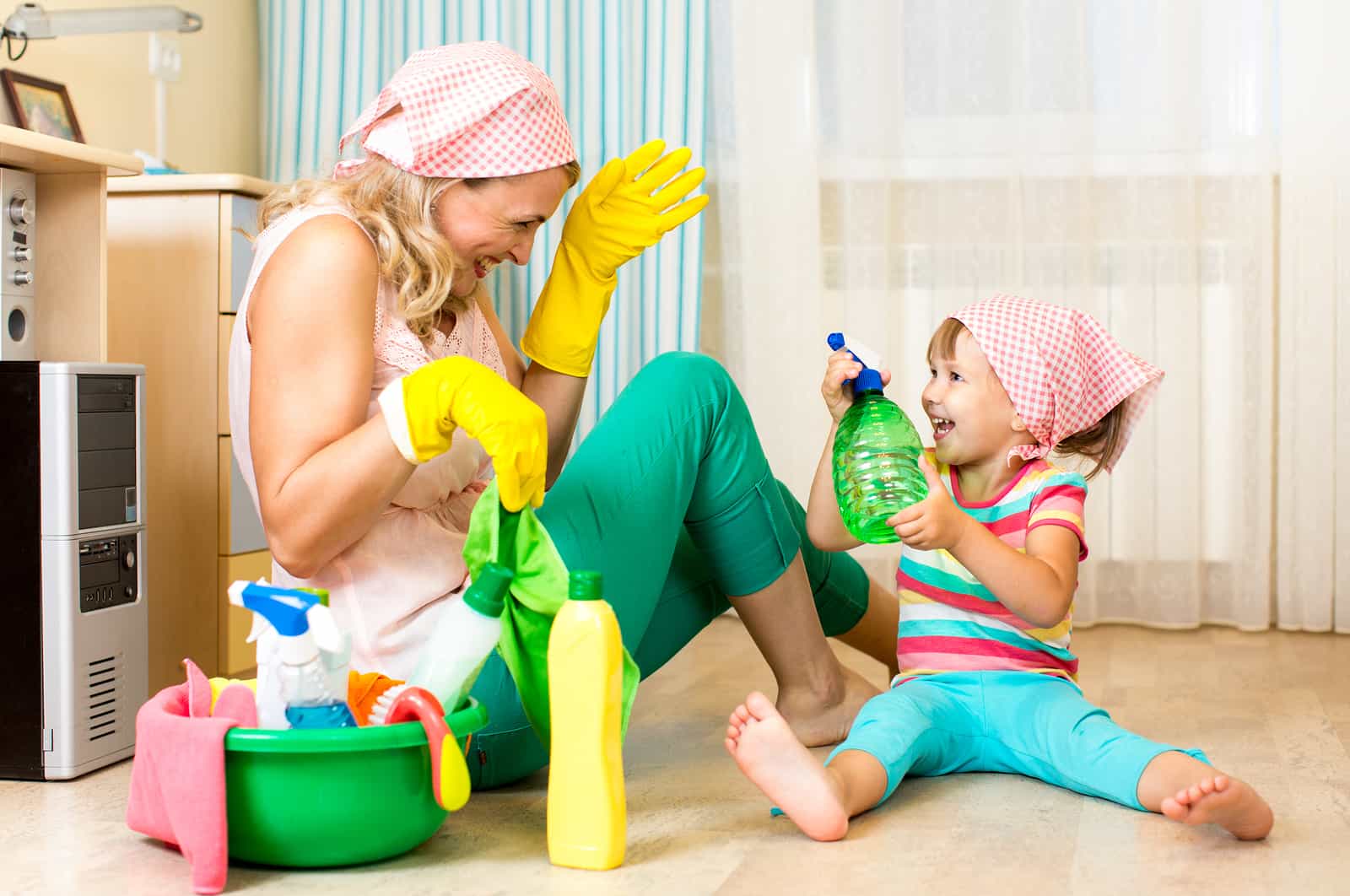
Keeping a clean house can be a vicious cycle of sneezing and wheezing when you have allergies. Cleaning dust can help you breathe easier, but doing the actual dusting can bring out your worst symptoms and leave you feeling too miserable to enjoy a sparkling house.
Allergies can be triggered by a variety of sources, including dust mites, pet dander and mold, all of which you may face when cleaning your house. Finding a way to clean up and stay sniffle-free can seem tricky, but there are steps you can take to make cleaning a breeze.
Cover Up
Creating a barrier between you and allergens is one of the best ways to protect yourself. Wear a mask, especially when you clean areas that haven’t been touched in a while, like under the bed or behind large furniture. Your hair can act like a magnet for stirred-up dust, so be sure to tie long hair back and cover your head with a hat or handkerchief. Lastly, always make sure to take a shower after spring cleaning to ensure that you don’t leave allergen residue wherever you go next. If you don’t have time for a shower, change your clothes, as allergens can cling to fabric.
Clean Greener
Loaded with fragrances, chemical-based cleaning products can easily irritate nasal passages and elicit reactions like sneezing and watery eyes, especially in people who already have allergies. Stick to natural cleaning products with mild scents or make your own cleansers at home. Baking soda, for example, makes an excellent all-purpose cleaner without all the additives. Orange, rosemary, lemon and mint essential oils can clean your house and leave it smelling great, too.
Clean More Often
The more often you clean, the less time dust, mold, grime and more has to accumulate and cause your symptoms to flare up. Rather than doing a major deep cleaning a few times a year, it’s better to clean every week. If it’s difficult to find time for cleaning, try taking just a few minutes each day to focus on one task or area, adding up to a complete house cleaning by the end of the week. There are plenty of printable household cleaning checklists available online.
Use the Right Tools
A vacuum can be your mortal enemy when you have allergies. Although vacuums handily suck the dust away, vacuum emissions can put irritants right back into the air, according to an abstract published by the American Chemical Society. Using one equipped with a HEPA air filter can help minimize emissions and make your vacuum your best cleaning friend again. Even with a HEPA filter, however, it’s important to handle your vacuum carefully. Take it all the way outdoors before opening it and emptying it into the trashcan. If your allergies are really bad, wear a mask to do this, or ask someone else in your family to do the dirty work for you.
See Your Doctor
Taking preventative steps to treat your symptoms can make all the difference. Ask your primary-care physician about seeing an allergy specialist. If over-the-counter medications don’t work, a doctor can try immunotherapy by administering allergy shots.
No matter how careful you are, it’s impossible to escape allergens completely, unless you live in a bubble. If you find that your symptoms are hard to cope with no matter what you do, you might want to consider hiring cleaning help.





